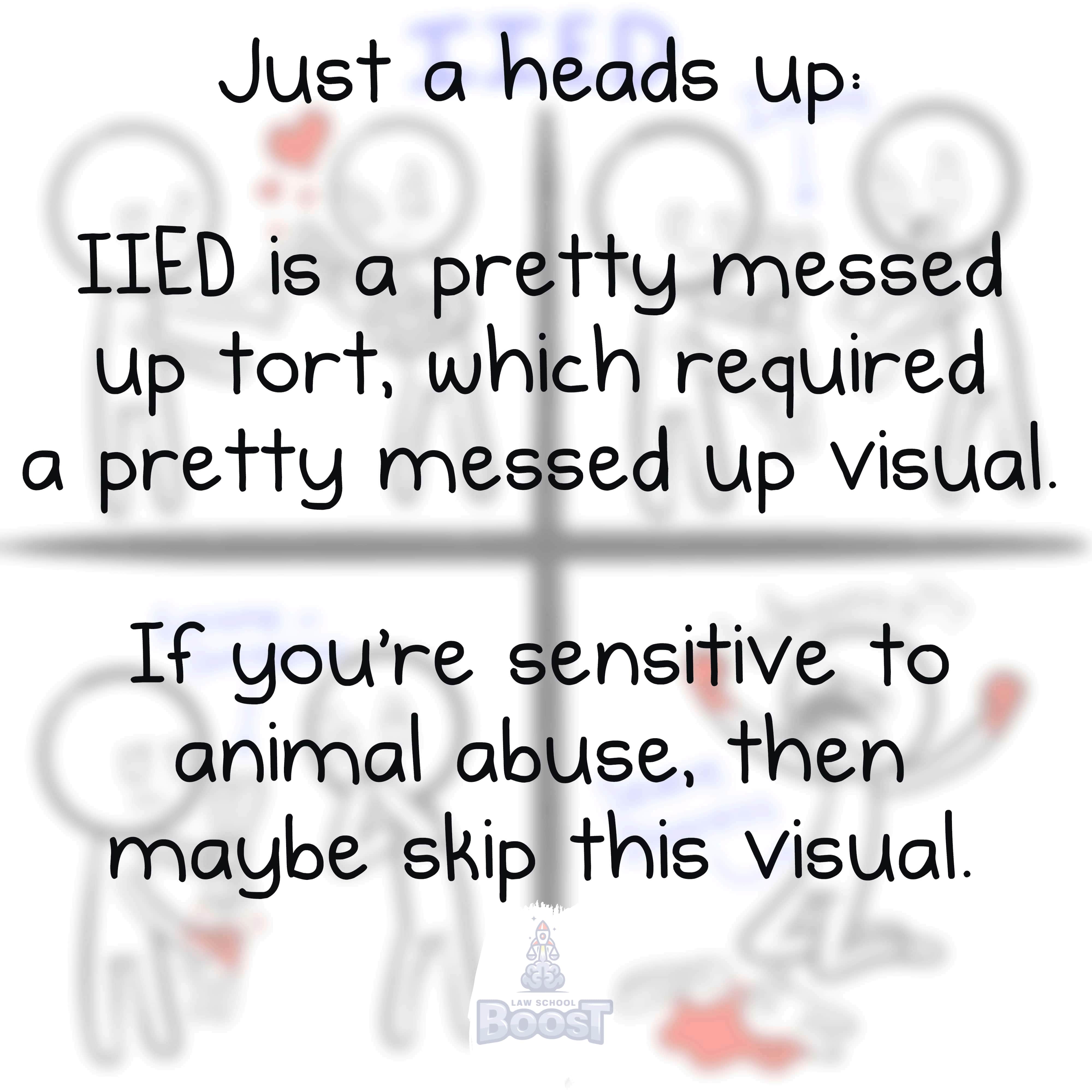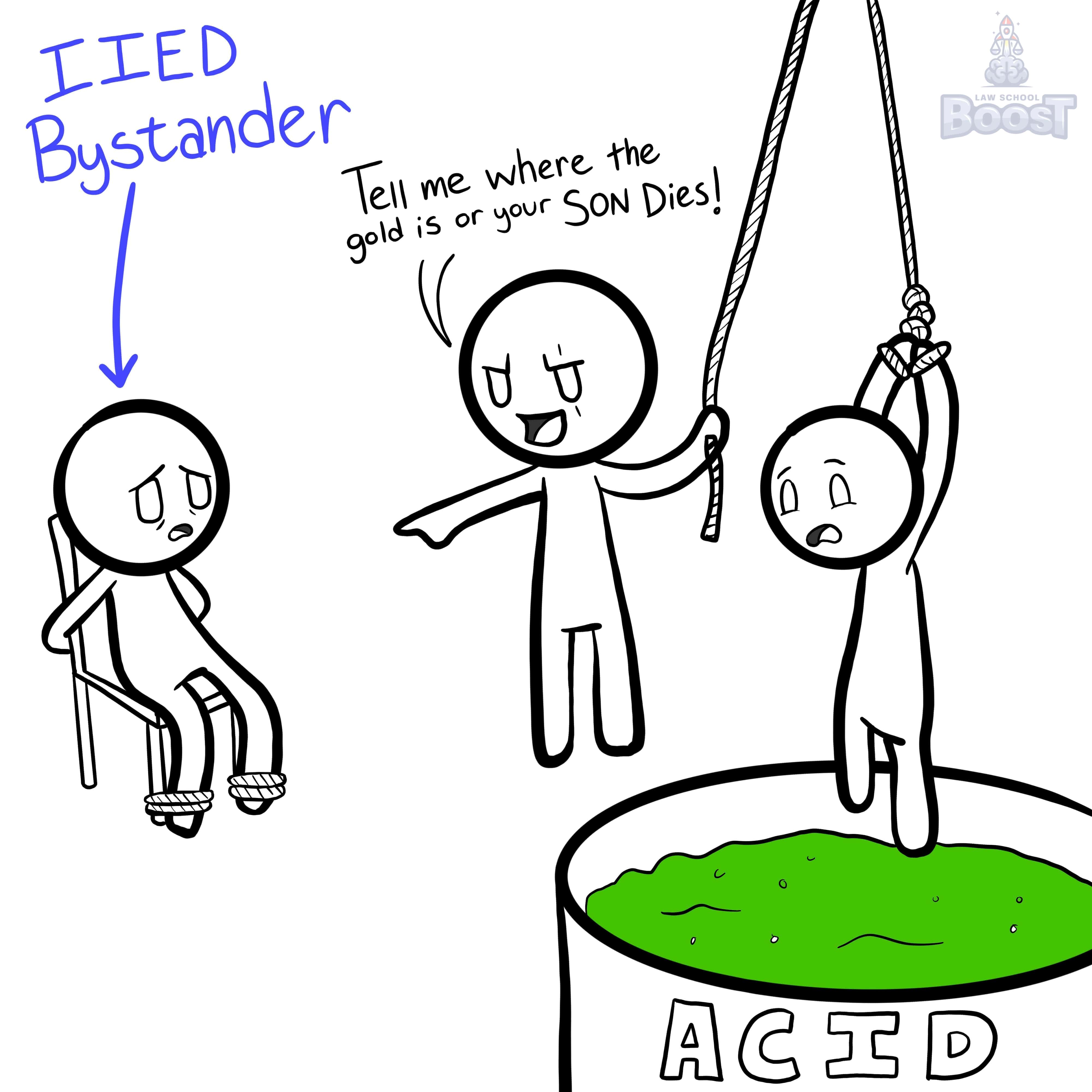👀
Torts • Intentional Torts
TORT#010
Legal Definition
When a defendant intentionally causes physical harm to a third party, a bystander may recover for severe emotional distress if: (1) they were present when the injury occurred, (2) they are a close relative of the injured party, and (3) the defendant knew of the bystander's presence and close relation.
Plain English Explanation
Generally, the law cares about objective, identifiable harm, and "hurt feelings" are usually hard to identify. For this reason, the law generally doesn't care about feelings and emotions. The court prefers things like a broken windshield, a bloody nose, an exploding teddy bear... things that you can point at and go, "Yup, that actually happened."
But humans are emotional, empathetic creatures. For a victim to claim IIED against a perpetrator, you must analyze how extreme and outrageous their actions are. However, for a bystander to claim IIED, you must analyze how justifiable their empathetic response was under the circumstances.
In other words, think of this as an action movie where the bad guy wants to get nuclear codes out of a secret agent, so they bring in the agent's family and starts breaking their fingers one by one. The agent is a bystander, and it is likely that seeing their family tortured would be a traumatic experience. Not only that, but the bad guy is doing it because he knows it'll cause emotional harm to the agent.
But humans are emotional, empathetic creatures. For a victim to claim IIED against a perpetrator, you must analyze how extreme and outrageous their actions are. However, for a bystander to claim IIED, you must analyze how justifiable their empathetic response was under the circumstances.
In other words, think of this as an action movie where the bad guy wants to get nuclear codes out of a secret agent, so they bring in the agent's family and starts breaking their fingers one by one. The agent is a bystander, and it is likely that seeing their family tortured would be a traumatic experience. Not only that, but the bad guy is doing it because he knows it'll cause emotional harm to the agent.
Hypothetical
Hypo 1: Bob sees Sam walking down the street. Bob stabs Sam in the stomach and runs off, leaving Sam to die outside of his house. Inside the house, Sam's daughter saw everything happen. She suffers a mental breakdown. Result: Sam's daughter has no claim for IIED as a bystander, because Bob had no idea she was watching inside the house.
Hypo 2: Sam is sitting at the park feeding pigeons. Bob walks over, pushes several children out of his way, and stabs Sam on the bench. The children scream in terror as Bob runs off. One of the children was Sam's daughter, who suffers a mental breakdown. Result: Sam's daughter has no claim for IIED as a bystander, because Bob had no idea she was Sam's daughter.
Hypo 3: Bob is mad that Sam's friend Amy because she always bakes Sam cookies but never bakes Bob any. One day at a BBQ party in Sam's backyard, Bob sees that Amy brought a huge plate of cookies for Sam. Bob jumps the fence, pushes past Sam, knocks over Sam's mother who falls and breaks her arm, and stabs Amy in front of everyone. Sam has a mental breakdown. Result: It depends. If Sam's breakdown was a result of seeing his friend Amy getting stabbed, then he has no case for IIED as a bystander because Amy is not a close relative. However, if Sam's breakdown was a result of seeing his elderly mother fall over and break her arm, then he does have an IIED bystander claim. It doesn't matter that Amy getting stabbed is objectively worse than Sam's mother falling and breaking her arm. What matters is that someone (Bob) hurt someone (Sam's mom) in the presence of a close relative (Sam) that they (Bob) knew were there and related to the victim.
Hypo 2: Sam is sitting at the park feeding pigeons. Bob walks over, pushes several children out of his way, and stabs Sam on the bench. The children scream in terror as Bob runs off. One of the children was Sam's daughter, who suffers a mental breakdown. Result: Sam's daughter has no claim for IIED as a bystander, because Bob had no idea she was Sam's daughter.
Hypo 3: Bob is mad that Sam's friend Amy because she always bakes Sam cookies but never bakes Bob any. One day at a BBQ party in Sam's backyard, Bob sees that Amy brought a huge plate of cookies for Sam. Bob jumps the fence, pushes past Sam, knocks over Sam's mother who falls and breaks her arm, and stabs Amy in front of everyone. Sam has a mental breakdown. Result: It depends. If Sam's breakdown was a result of seeing his friend Amy getting stabbed, then he has no case for IIED as a bystander because Amy is not a close relative. However, if Sam's breakdown was a result of seeing his elderly mother fall over and break her arm, then he does have an IIED bystander claim. It doesn't matter that Amy getting stabbed is objectively worse than Sam's mother falling and breaking her arm. What matters is that someone (Bob) hurt someone (Sam's mom) in the presence of a close relative (Sam) that they (Bob) knew were there and related to the victim.
Visual Aids





